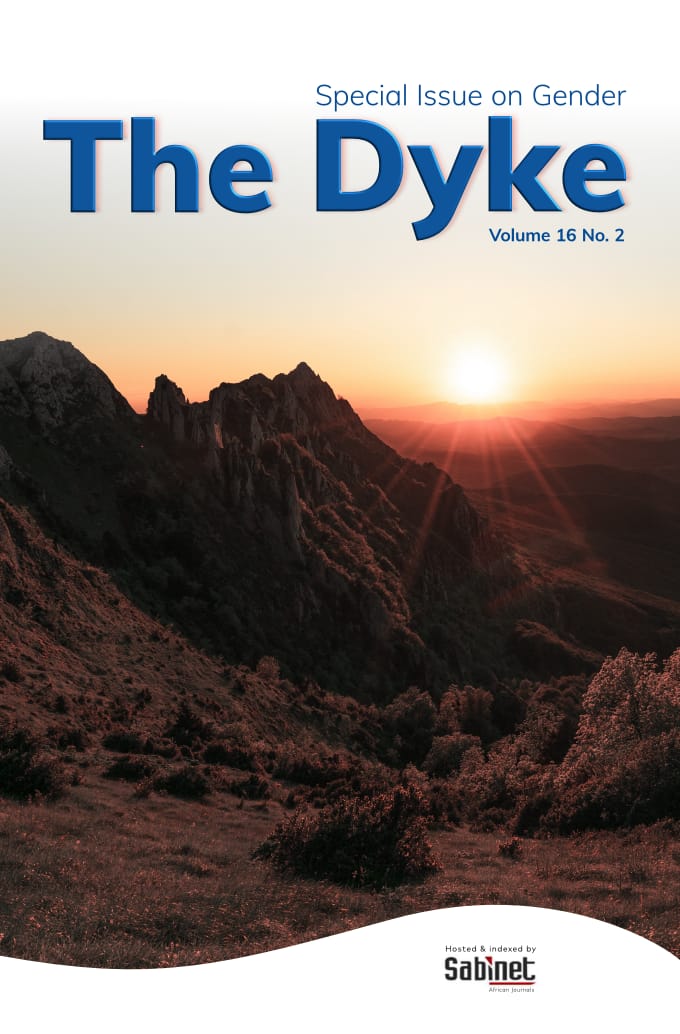Cybersexual harassment in a state university in Zimbabwe: Voices of female students
DOI:
https://doi.org/10.64754/thedyke.v16i2.185Keywords:
Sexual harassment, cyber sexual harassment, online harassment, digital harassment, internet, university students.Abstract
Social media has become a very popular means of communication between and among people as Internet use has increased globally. This means of communication has led to an upsurge in negative online behaviours such as cyber sexual harassment. Cybersexual harassment as a negative online behaviour adversely impacts university students’ well-being and interferes with their ability to learn. Whilst there has been intensive research on online sexual harassment, there is a paucity of empirical examination of cyber sexual harassment especially among female university students. Addressing cyber sexual harassment in universities is important and makes the object of this research. This case study research, therefore, investigated female undergraduate students’ experiences of cyber sexual harassment. This is a study in which the voices of cyber sexual harassment victims were captured through interviewing undergraduate female student participants. Qualitative data was collected from in-depth interviews with purposely selected undergraduate female student participants. Twenty undergraduate female students of the 2022 academic year at a selected university were purposively sampled for the study. Cybersexual harassment experiences of participants emerging from the qualitative interview exercise were: receiving explicit images and videos; being requested for sex and nude pictures by perpetrators and being subjected to sexually explicit hate speeches. In view of these findings, the recommendations of the study are that: awareness programmes should be mounted in the university to inform students about the dangers of cybersexual harassment; there is a need to educate students about their rights and dangers obtaining in cyberspace; anti-cyber sexual harassment programmes tailored for university students may be a step in the right direction; the need to encourage conversation about cybersexual harassment within the university community cannot be overemphasized.
References
Arafa, A.E., Elbahrawe, R.S., Saber, N.M., Ahmed, S.S. and Abbas, A. M. 2018. Cyber Sexual Harassment: A cross-sectional survey over female university students in Upper Egypt. International Journal of Community Medicine and Public Health. 5 (61-65): 77 – 92.
Australian Human Rights Commission 2017. Change the course: National report on sexual assault and sexual harassment at an Australian Universities. Sydney, New South Wales.
Barak, A. 2005. Sexual harassment on the Internet. Social Science Computer Review, 23(1): 77- 92. https://doi.org/10.1177/0894439304271540.
Carly, C. 2020. Cyber sexual harassment fact sheet. Title IX Office. Franklin University.
Champion, A.R., Oswald, F., Khera, D. and Pederson, C. L. 2022. Examining the gendered impact of technology-facilitated sexual violence: A Mixed Methods Approach. PMID 51(3):1607 – 1624. Doi: 10.1007/s10508-021-02026-y
Cowie, H. 2017. Bullying at university: The social and legal contexts of cyberbullying among university students. Journal of Cross-Cultural Psychology, 48(8): 1135-1137
European Institute for Gender Equality 2017. Cyber violence against women and girls. European Institute for Gender Equality.
Haslop, C., Rourke, F.O. and Southern, R. 2021. No snowflakes: The toleration of harassment and an emergent gender-related digital divide, in a UK student online culture. The International Journal of Research into new media technologies 27(5): 1418-1438 https://doi.org/10.1177/1354856521989270.
Li., Q. 2006. Cyberbullying in schools: A research of gender differences. School Psychology International, 27, 157–170. doi:10.1177/0143034306064547.
Medolyan, A. 2020. Coding Qualitative Data: “How to Code Qualitative Research” https://getthematic.com/insights/coding-qualitative-data/.
Megan, L. and Krysik, J. 2012. Online Harassment Among College Students: A replication incorporating new Internet Trends. Information, Communication and Society, 15(5): 703 719.
Merriam, S.B. and Tisdell, E. J. 2015. Qualitative research: A guide to design and implementation. 4th Edition. Jossey Bass.
Powell, A. Scott, A. J. and Henry, N. 2018. Digital Harassment and Abuse: Experiences of Sexuality and gender minority adults. Sage Journals https://doi.org/10.1177/1477370818788006.
Qin, C. 2015. The times they are changing: cross-cultural perspectives of sexual harassment in cyberspace (Unpublished MA Thesis) Michigan State University.
Rangaswami, A. and Gevargiz, E. 2021. Online sexual harassment amongst women students at Santa Clara University. Silicon Valley Sociological Review. 19, Article 6.
Reed, E., Wong, A. and Ray, A. 2019. Cyber Sexual Harassment: A Summary of current measures and implications for future research. Violence against Women Reviews 1727-1740.
Schenk, S. 2008. Cyber sexual harassment: The development of the cyber sexual experience questionnaire. McNair Scholars Journal, 12(1): 8.
Sibanda, M. 2020. Cyberbullying in higher education tertiary institutions in Zimbabwe: Forms, extent, effects and contributing factors. Journal of Systems Integration 11(2): 17 – 27.
Suler, J. 2004. The online disinhibition effect, Cyber Psychology & Behavior, 7(3): 321-327.
Van Royen, K., Poels, K., Vandebosch, H., and Adam, P. 2017. “Thinking before posting?” Reducing cyber harassment on social networking sites through a reflective message. Computers in Human Behavior, 66: 345–352. https://doi.org/10.1016/j.chb.2016.09.040

Downloads
Published
How to Cite
Issue
Section
License
All articles in The Dyke are published under the Creative Commons Attribution 4.0 International License (CC BY 4.0).
Under this licence:
- Others may copy, redistribute, remix, transform, and build upon the work for any purpose, even commercially.
- Appropriate credit must be given to the original author(s) and source (The Dyke), along with a link to the license.
- Any changes made must be indicated.
Full licence details: https://creativecommons.org/licenses/by/4.0/
Archiving and Preservation
The Dyke supports long-term preservation of scholarly work through partnerships with digital repositories and indexing services, including Sabinet African Journals. Authors are also encouraged to deposit a copy of their published article in institutional or subject-specific repositories.




